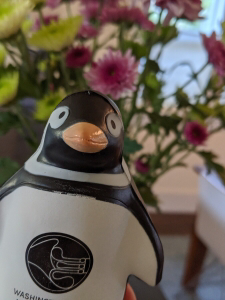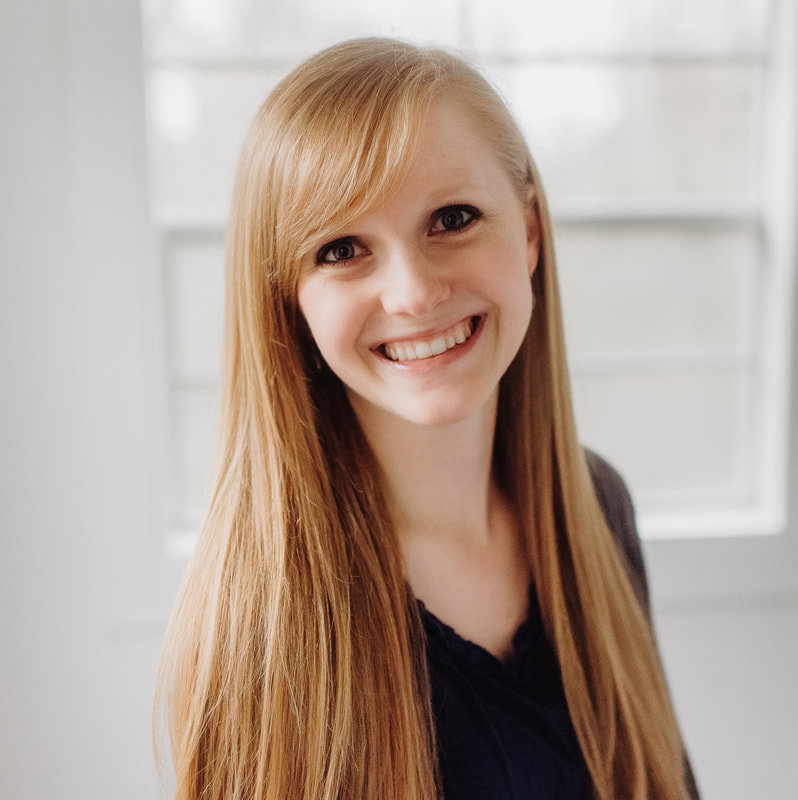Sounds of laughter and friendly conversation danced in the air as I walked toward the Kilworth Chapel at University of Puget Sound last Wednesday morning. “Hi, Rose!” Within moments of stepping in the door, Kirsten Carlson greeted me with a smile, hug, a penguin, and the 2019 conference booklet. The next few days were packed full of honors recitals, master classes with Irene Peery Fox, and workshops. I value these opportunities for continuing education, but most of all, I treasure the conversations with colleagues I saw throughout the week! Here are three workshops that stand out in my mind as I look back at Conference.
Five-Finger Patterns and Famous Composers: Fresh Ideas for Solo and Duet Piano Works
Dr. Vincent Della Tonia, NCTM
This workshop outlined the benefits of five finger patterns such as directional reading, aural reference, transposition, technique, and improvising. He suggested some different reading approaches with the five finger patterns and suggested method books that corresponded with each approach. What I valued the most about this workshop was the time he spent sharing a comprehensive list of some lesser known piano literature for beginner to lower intermediate students! Here are a few of the solo and duet works that he shared:
“I Really Love My Minuet!” | Dr. Judith Schoepflin, NCTM
Dr. Schoepflin highlighted keys to student engagement, ownership, and enjoyment in this thoughtful presentation. She shared four steps for every independent music teacher to embrace in their lessons with all ages of students:
She performed a set of pieces varying in style to demonstrate how to incorporate these four values into every lesson. I appreciated the specific examples she gave in how to engage students imagination and help them represent the musical time period of each piece. The books she recommended on her handout are fabulous. Here are a few:
Market Your Studio Like You Mean It! | Mariya Lincoln
Mariya outlined “how marketing applies to the private music teacher and how the process of choosing a teacher has changed drastically in the last 10+ years.”
This informative workshop gave practical steps how to have an online presence without breaking the bank. She reinforced the value of having a simple studio website at minimum. If you aren’t sure about where to start to make a website, check out Weebly or Squarespace. Also, I recommend talking to your local music teachers chapter to work on your individual studio websites together!
She gave us a handout to apply her suggestions to our own studios. You can do this at home, too!
Five-Finger Patterns and Famous Composers: Fresh Ideas for Solo and Duet Piano Works
Dr. Vincent Della Tonia, NCTM
This workshop outlined the benefits of five finger patterns such as directional reading, aural reference, transposition, technique, and improvising. He suggested some different reading approaches with the five finger patterns and suggested method books that corresponded with each approach. What I valued the most about this workshop was the time he spent sharing a comprehensive list of some lesser known piano literature for beginner to lower intermediate students! Here are a few of the solo and duet works that he shared:
- “Gradus - 40 studies for the piano” by Samuel Adler
- “The first term at the piano, Swindherd’s Dance” by Bella Bartok
- “Historietas Maravilhosas, No 7 Forest Fairy” by O. Lorenzo Fernandez
- ”12 Etudes Op 39” by Edward Macdowell
- “Bagatelles Op 5, No 9” by Alexandra Tcherepnin
- ”Pleasures of Youth, Six Sonatinas on Five Notes Op. 163” by Anton Diabelli
- ”Teacher and Pupil” by Joseph Low
- ” Three Jazz Duets” by Mark Nevin
- “Microjazz Piano Duets” by Christopher Norton
“I Really Love My Minuet!” | Dr. Judith Schoepflin, NCTM
Dr. Schoepflin highlighted keys to student engagement, ownership, and enjoyment in this thoughtful presentation. She shared four steps for every independent music teacher to embrace in their lessons with all ages of students:
- They need to feel like they are the only person in the world playing this piece.
- They need to develop an emotional connection to the piece.
- They are more likely to develop ownership if they have a choice in the selection of the piece.
- They need to engage their imagination.
She performed a set of pieces varying in style to demonstrate how to incorporate these four values into every lesson. I appreciated the specific examples she gave in how to engage students imagination and help them represent the musical time period of each piece. The books she recommended on her handout are fabulous. Here are a few:
- ”The Minuet figures according to Kellom Tomlinson”
- ”Complete theoretical and practical pianoforte school, Op 500” by Carl Czerny
- “Hailstones and Hailbut Bones” by Mary O’Neill
- ”The Oxford Companion to Instruments and Ochestras” by Kenneth and Valerie McLeish
- ”An Illustrated History for Young Musicians” by Comeau and Covert
- ”The World at Your Fingertips”’ by Brewer and Lau
- ”Composer Highlights, an educational coloring book series” by Kidd
- “Shades and sounds of women composers” by Jennifer Booster
Market Your Studio Like You Mean It! | Mariya Lincoln
Mariya outlined “how marketing applies to the private music teacher and how the process of choosing a teacher has changed drastically in the last 10+ years.”
This informative workshop gave practical steps how to have an online presence without breaking the bank. She reinforced the value of having a simple studio website at minimum. If you aren’t sure about where to start to make a website, check out Weebly or Squarespace. Also, I recommend talking to your local music teachers chapter to work on your individual studio websites together!
She gave us a handout to apply her suggestions to our own studios. You can do this at home, too!
- 3 Goals
- 3 Roadblocks
- My Target Audience
- Where/how to reach target audiences (brainstorm)
- Where I plan out have/increase my online presence
- My contacts / network connections
- 3 steps I will take right away
- 3 creative or slightly uncomfortable ideas I'll consider





